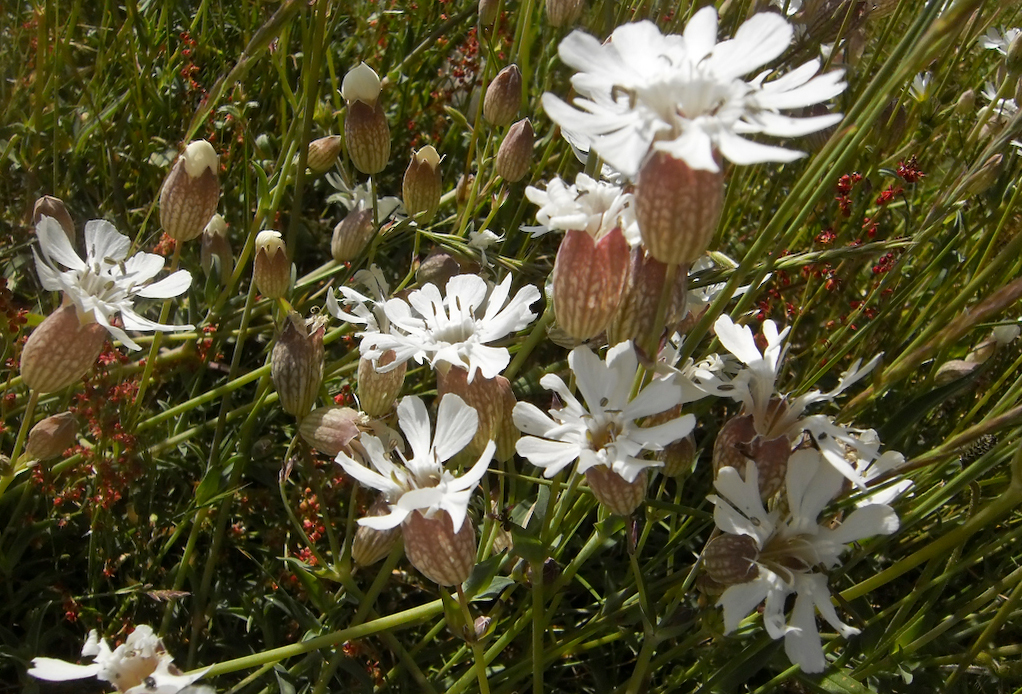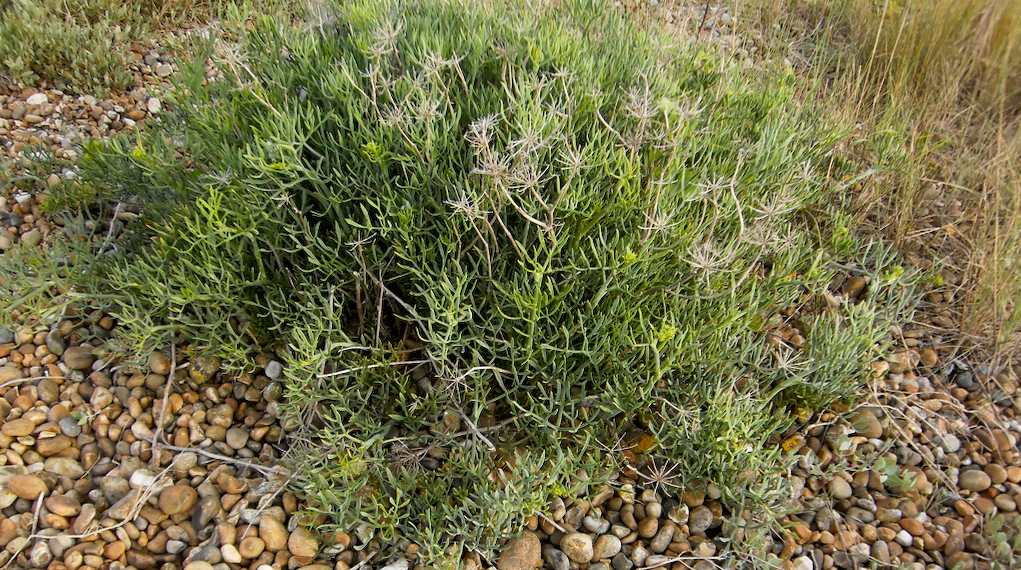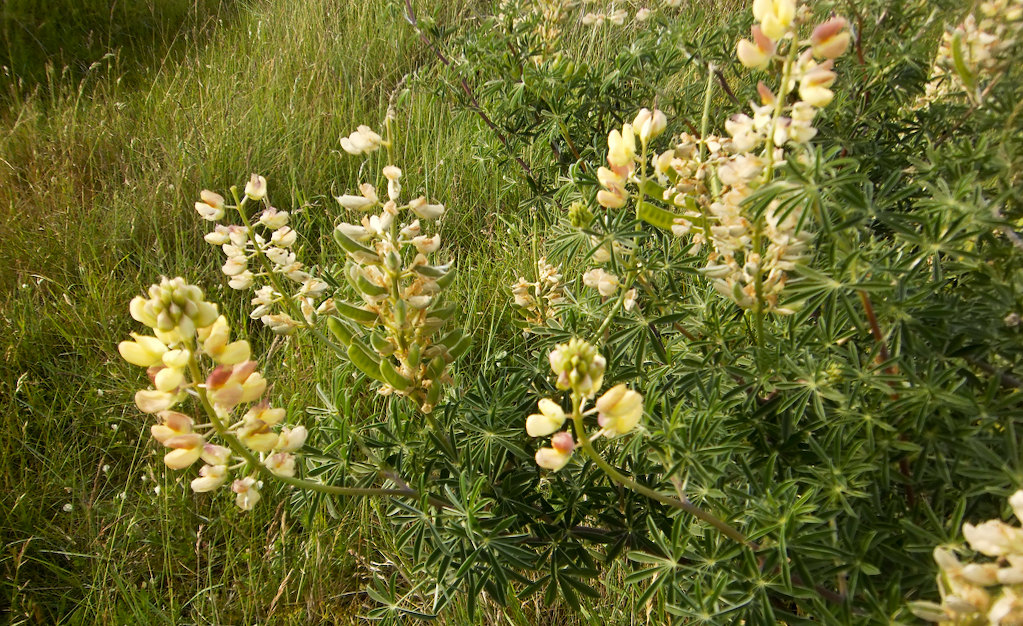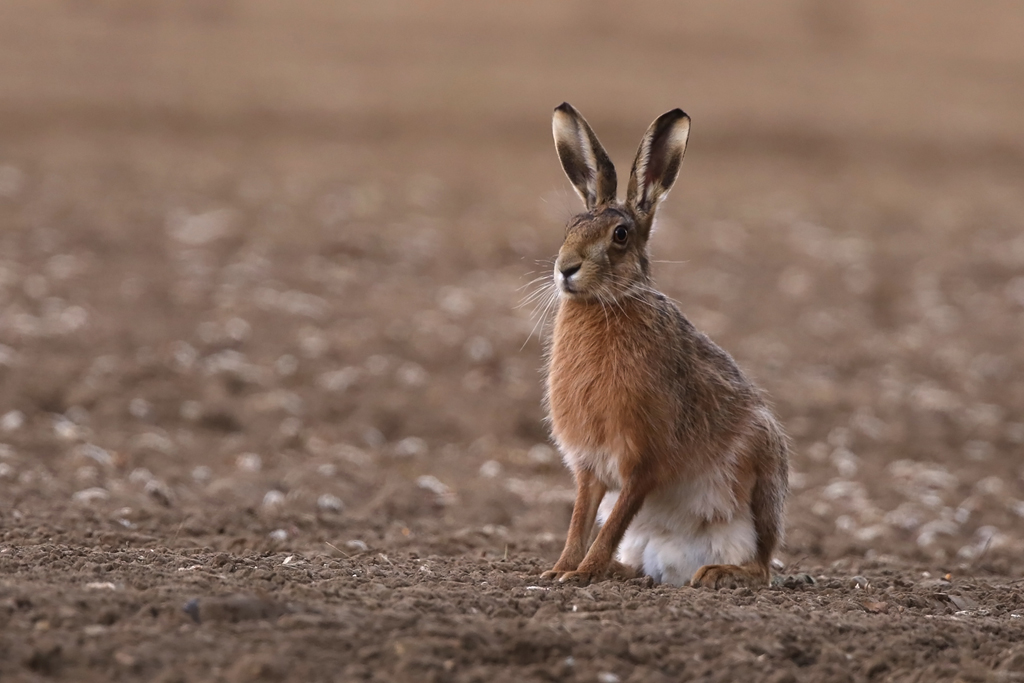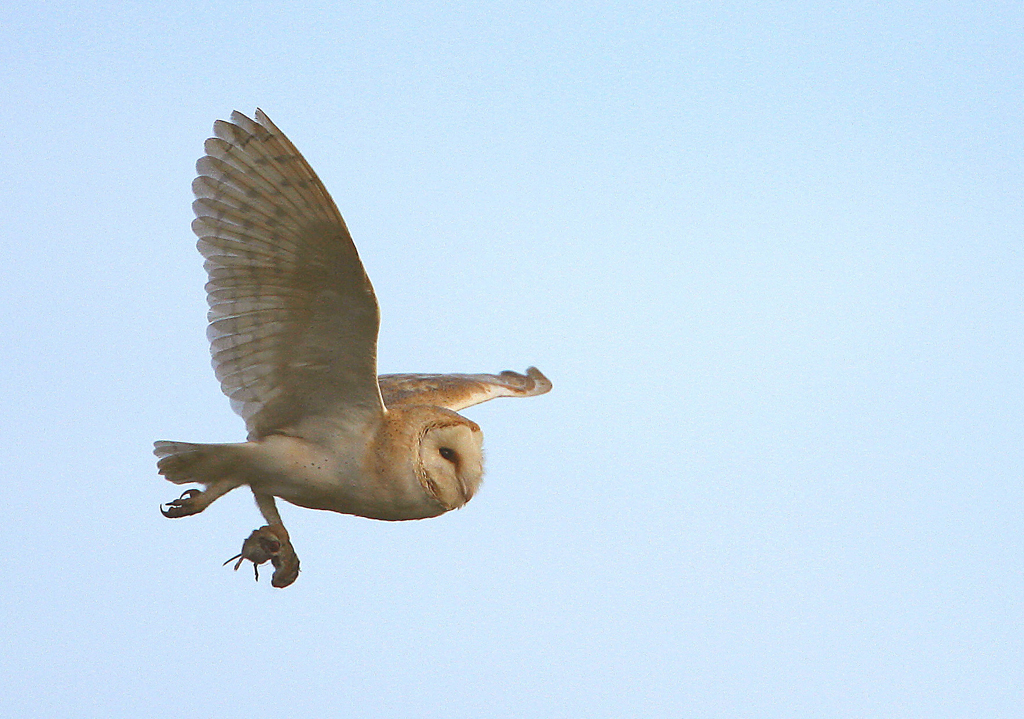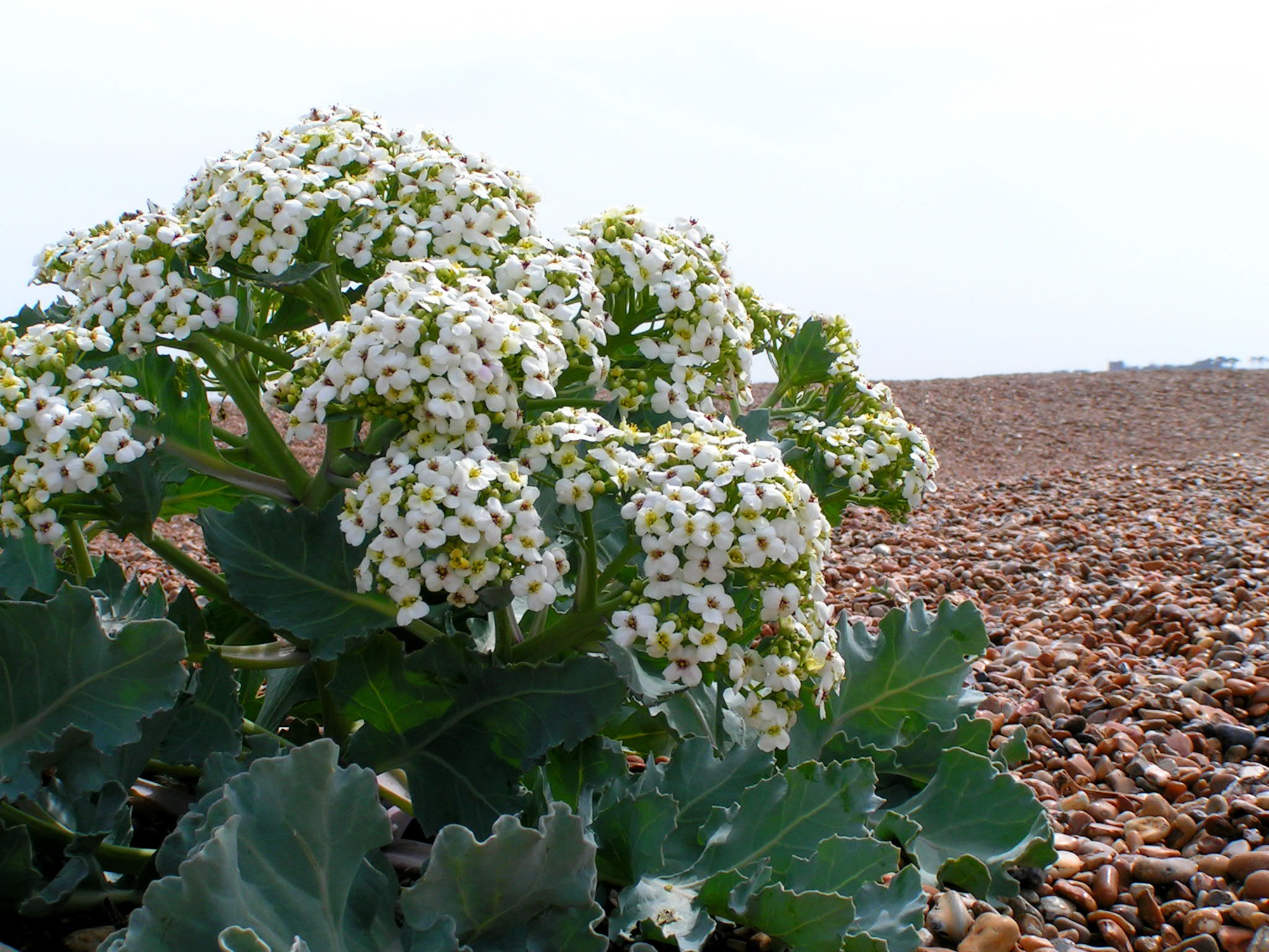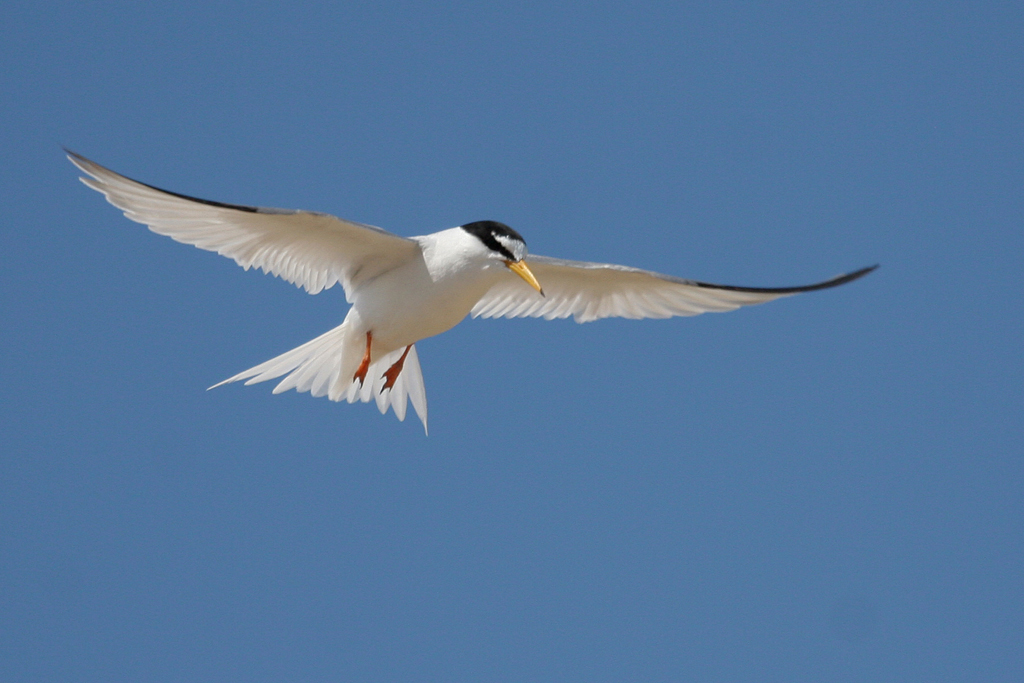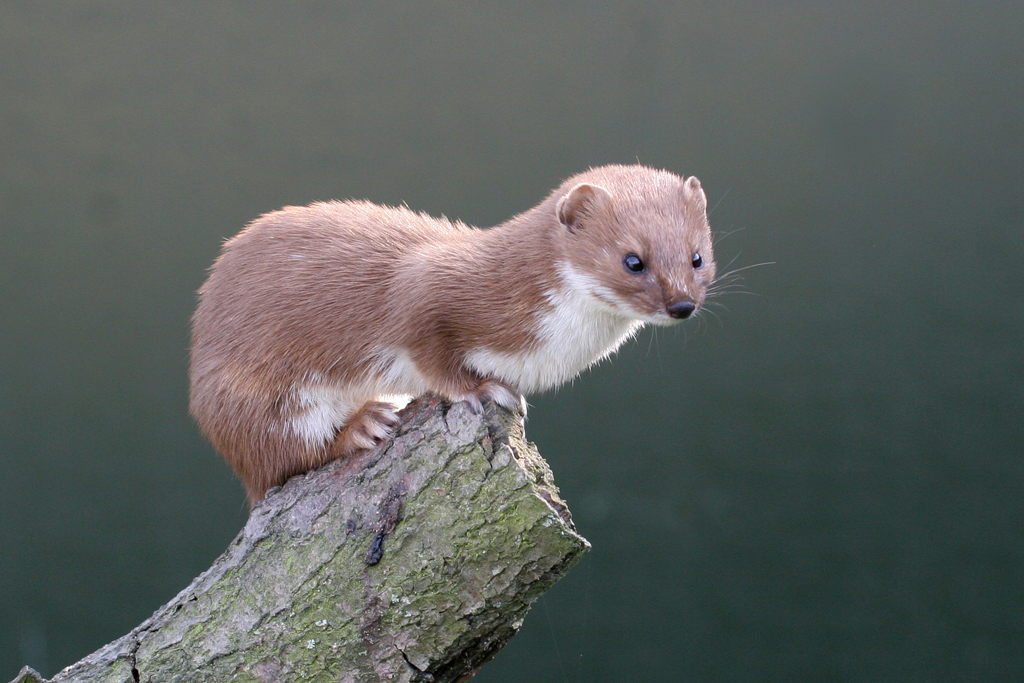by Lydia Vulliamy.
Shingle Street is a magical place, right by the mouth of the River Ore. Typical shingle flora grow there in profusion. The great mounds of sea kale Crambe maritima predominate. The leaves die back in the winter; in spring the first shoots appear, very dark purple, crinkly and succulent. The plants fully grown are as big as shrubs, and their roots penetrate deep into the shingle.
Then there are the yellow horned poppies, Glaucium flavum, with their silvery leaves, handsome big flowers and great long seed pods – their horns. The sea pea, Lathyrus japonicus, ssp maritimus, is prolific on this beach, but very local. Its deep red flowers turn almost blue later. Viper’s bugloss, Echium vulgare, is spreading here. The deep rich blue of the flowers, which are very attractive to bees, is a joy to see. Early in the year there are bright yellow clumps of biting stonecrop, Sedum acre, and later the delicate low-growing English stonecrop, Sedum anglicum, with its pale pink blossoms, is everywhere, This is spreading rapidly. A little while ago there were only few patches, though we saw it the other side of the River Ore, on North Weir Point, when we managed to cross the treacherous current, the strongest in East Anglia, I understand. Valerian, Centranthus ruber, with its colour variations, white and different reds, is also spreading, and great branched mullein plants, Verbascum sp, (pulverulentum?) possibly escaped, are growing in a forest, some about eight feet high, in front of the village. Fragrant lady’s bedstraw, Galium verum, is everywhere on the shingle.
Our common weed herb Robert, Geranium robertianum, grows quite differently here, compact and deep red, which contrasts with the white of the sea campion, Silene uniflora, and the orangey glow of the sheep’s sorrel, Rumex acetosella, early in the year. The small-flowered hairy tare, Vicia hirsuta, grows in the grass, and also the yellow vetch, Vicia lutea, which is more white that yellow. It’s recorded as nationally rare.
In the great flood of 1953 the sea wall was breached and I remember being rowed across a vast expanse of water where the only indication of a road was the very tops of the bushes in the hedge. When the sea wall was repaired soil was brought in for the purpose, and stacked by the side of the road. Not all of it was used, and now the bank of ‘foreign‘ soil grows completely different plants, notably bee orchids, Ophrys apifera, but also field scabious, Knautia arvensis, knapweed, Centaurea nigra, and hoary plantain (lamb’s tongues) Plantago media, with its furry flowers.
Walking further towards the river mouth, some remaining asparagus, Asparagus officinalis, plants can still be seen, and a very few patches of rock samphire, Crithmum maritimum, (not to be confused with the marsh samphire, Salicornia europaea, which grows round the lakes). There used to be thriving clumps of these on the sea wall, but they were destroyed when it was rebuilt. We found golden samphire Inula crithmoides here, a yellow daisy flower which is recorded as a nationally scarce species not often seen in Suffolk, and also the aromatic sea wormwood or sea southernwood, Seriphidium maritimum. Sea milkwort, Glaux maritima, with its pretty pink flowers (no relation to the heath milkwort) was growing on the hard mud.
Another plant we love, not only for its red leaves on the shingle in the autumn, is the sea beet, Beta vulgaris ssp maritima, which we occasionally raid for the odd leaf – wild spinach. There’s so much of it that this doesn’t seem to be a crime. I understand that years ago the sea pea Lathyrus maritimus was harvested and eaten too, though the tiny peas would take an age to shell, for not more than an egg-cupful. We can still gather the marsh samphire. It’s very salty, but nice with butter.
A little group of yellow tree lupins, Lupinus arboreus, grow at the end of the sea wall; some flowers have a bluish tinge, probably hybridising.
About 60 years ago the shingle was covered with golden dock plants, Rumex maritimus, but my grandfather, Lionel Vulliamy, hated this plant and paid me to pull it up, but some remains. Now there is ragwort, Senecio jacobaea, growing everywhere, and this is threatened with the same treatment, but insects love it, so that hasn’t happened yet.
These are just some of the fascinating wild flowers of Shingle Street.
| Common name | Scientific name | |
|---|---|---|
| Goat’s beard | Tragopogon pratensis | |
| Mullein | Verbascum pulverulentum/nigrum (?) | |
| Yellow horned poppy | Glaucium flavum | |
| Long rough-headed poppy | Papaver argemone | |
| Sea kale | Crambe maritima | |
| Rock samphire | Crithmum maritimum | |
| Viper’s bugloss | Echium vulgare | |
| Sea pea | Lathyrus japonicus ssp maritimus | |
| Biting stonecrop | Sedum acre | |
| English stonecrop | Sedum anglicum | |
| Red valerian | Centranthus ruber | |
| Sea lavender | Limonium vulgare | |
| Thrift/Sea pink | Armeria maritima | |
| Rose | Rosa sp. | |
| Bee orchid | Ophrys apifera | |
| Sea sandwort/purslane | Honckenya peploides | |
| Asparagus | Asparagus officinalis | |
| Rosebay | Epilobium angustifolium | |
| Golden dock | Rumex maritimus | |
| Knapweed | Centaurea nigra | |
| Herb Robert | Geranium robertianum | |
| Sheep’s sorrel | Rumex acetosella | |
| Field scabious | Knautia arvensis | |
| Hoary plantain Aka Lamb’s tongue | Plantago media | |
| Sea aster | Aster tripolium | |
| Sea spurrey | Spergularia media | |
| Bird’s-foot trefoil | Lotus corniculatus | |
| Hairy tare | Vicia hirsuta | |
| Yellow vetch | Vicia lutea (rare) | |
| Lady’s bedstraw | Galium verum | |
| Spear thistle | Circium vulgare | |
| Marsh samphire | Salicornia europaea | |
| Sea plantain | Plantago maritima | |
| Buck’s-horn plantain | Plantago coronopus | |
| Sea purslane | Halimione portulacoides | |
| Yarrow/milfoil | Achillea millefolium | |
| Tree lupin | Lupinus arboreus | |
| Sea wormwood/southernwood | Seriphidium maritimum | |
| Hare’s-foot trefoil | Trifolium arvense | |
| Mouse-ear hawkweed | Pilosella officinarum | |
| Burrowing clover | Trifolium subterraneum | |
| Knotted clover | Trifolium striatum (rare) | |
| Sea campion | Silene uniflora | |
| Golden samphire | Inula crithmoides. | |
| Privet | Ligustrum vulgare | |
| Sea beet | Beta vulgaris ssp maritima | |
| Ragwort | Senecio jacobaea | |
| Red clover | Trifolium pratense | |
| White clover | Trifolium repens | |
| Great lettuce | Lactuca virosa | |
| Sea holly | Erynguim maritimum | |
| Sea bindweed | Calystegia/Convolvulus soldanella | |
| Sea milkwort | Glaux maritima |




